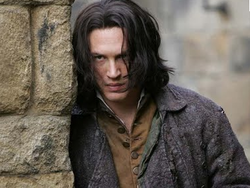 Rochester is a tormented character, full of contradictions, particularly when it comes to his treatment of Jane. Modern readers aren't always sure what to make of him--perhaps for good reason. Critics have long touted Rochester as an example of the Byronic Hero, a seething, dark, yet powerfully attractive male character. This archetype was developed in the writings of Lord Byron during the Romantic period (roughly 1770-1840), and
continues to manifest in pop culture today (Edward Cullen, anyone? And/or the other hundred sultry vampires on television?).
In order to gain more literary and historical context, please read the following articles online:
1. Overview of the Byronic Hero
http://teachers.sduhsd.k12.ca.us/sfarris/Files/AP%20Lit%20Files/Microsoft%20Word%20-%20Characteristics%20of%20the%20Byronic%20Hero.pdf
2. Overview of Romanticism
http://academic.brooklyn.cuny.edu/english/melani/cs6/rom.htmlConsidering both articles, as well as your assigned reading in
Jane Eyre, please write a post that answers the following questions.
To what extent can Rochester be considered a Byronic Hero?
Which of these qualities are attractive to Jane? Which of these qualities
contribute to the shocking revelations of 25/26 and ultimately push
her away? How might Rochester be considered bad news
to Bertha as well as to Jane? Please integrate direct quotes into your analysis.
Please also reply to at least one of your classmates.
Length: 2-3 paragraphs for original post.
1-2 paragraphs for reply to classmate.
Due: Wednesday night (Jan 16),
by midnight at the latest.
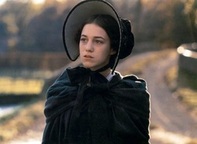 Behold, my favorite Jane Eyre: French actress Charlotte Gainsbourg, from the '96 movie version. Doesn't she just look the part perfectly? (cultural tangent: Gainsbourg's father is French icon/musician Serge Gainsbourg. Feel free to enhance your potential hipster quotient by watching this classic Serge/Brigitte Bardot video: http://www.youtube.com/watch?v=nB112Vbl8-A. You'll thank me when you're the coolest kid in college).
Inaugural Blog Assignment
Please read the following extremely brief article:
The Position of Victorian Middle Class Women
http://www.victorianweb.org/authors/bronte/cbronte/73cbwomen.html
Respond:
In the blog comments, please write a post that answers the following
question (s):
1. How does social class affect Jane in your assigned pages (155-207), specifically her
interactions with and reactions to Blanche Ingram and her cohort? Analyze the
struggle that arises between Jane's sense of individuality and independence, and
the obligation she feels to "be good" and follow the rules of social class set
out by Victorian society.
2. Length: 2-3 paragraphs. Must include at least one direct quote, properly cited.
3. Please also reply to at least one of your classmate's comments.
DUE: Tuesday 1/10, by midnight
I look forward to reading your thoughts!
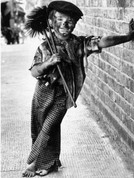 Directions for Paired Poem Response Homework:
1. Please read through the sample responses to the 2005 Poetry prompt, available here: http://apcentral.collegeboard.com/apc/public/repository/05_ap_englishlit_46922.pd2. Please type up the introduction and thesis that you came up with in class on Friday, for the same prompt and post it in the comments. (Only one paragraph per pair/trio is necessary).
3. As an individual, please post a response to the AP sample responses AND your own. You can
write about whatever you notice--for example, were your ideas similar to the samples? If not,
do you think they are just as strong? What, if anything, would you revise about your original
argument after seeing the sample essays? Etc.
Due: by midnight on Sunday. This assignment is worth 20 points.
The Great Gatsby Essay
Product Descriptor
Ms. Draper
1. Using the thesis statements and outlines you began in class today, please finish a rough draft of your essay for Monday.
2. If you were absent in class on Thursday, here are the essay guidelines...
-Form a meaningful and specific thesis statement about your envelope topic (think
back to our discussions and the points you brought up--you all have specific
opinions about your topics at this point).
-Write a 750 word essay that develops and supports your thesis statement.
-MLA format please.
3. Next week we are going to do a lot of work on writing and revising, so be sure to bring 2 copies of your rough draft for peer review...
This poem is killing me. Killing. Me. Thank you, Jenny! I think you really gave "Gary" a run for his money here. (P.S. This ink is the same color as Gatsby's suit).
Nick Carraway’s confessions
I’m inclined to reserve all judgements.
I was going to bring back all such things into my life and become again that
most limited of all specialists, the “well-rounded” man.
I felt the basic insincerity of what she had said.
I was on my way to get roaring drunk from sheer embarrassment.
I was casually sorry, and then I forgot.
I thought I loved her.
I am slow thinking and full of interior rules that act as brakes on my
desires.
I realize now that under different circumstances that conversation might have
been one of the crises of my life.
I had no girl whose disembodied face floated along the dark cornices and
blinding signs.
I had merely grown used to it, grown to accept West Egg as a world complete
in itself.
I’d never understood before.
I disliked him so much by this time that I didn’t find it necessary to tell
him he was wrong.
I disapproved of him from beginning to end.
I found myself on Gatsby’s side, and alone.
I felt a certain shame for Gatsby.
I could only remember, without resentment, that Daisy hadn’t sent a message
or a flower.
I see now that this has been the story of the West.
I couldn’t forgive him or like him but I saw that what he had done was, to
him, entirely justified.
I didn’t investigate.
Contributor's Note
(In this morning’s Lit class, I wrote a found poem after reading one that
I felt did not do Nick justice. Its author took some Nick quotes from The Great
Gatsby in chronological order, so I did the same with a completely different
message. Then I made myself sad.)
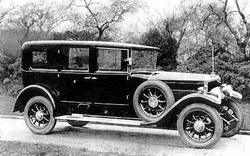
This is what Gatsby's car might have looked like. Except with more "triumphant hatboxes and supper-boxes and tool-boxes" and maybe "terraced with a labyrinth of windshields that mirrored a dozen suns." You know.
Slang Activity Directions
1. Finish your creative piece, with 1920's slang. (Handout available on Weekly Assignments page if you didn't get it in class.)
2. Post your story in the comments section by Sunday at midnight.
3. Reply to at least one of your classmate's stories.
Important:
Story must be appropriate for consumption on a public, educational blog.
But you knew that.
I look forward to reading!

Figurative Language Assignment:
1. Choose one particular example of figurative language (metaphor, simile, image, personification) that you enjoyed from Act I of Hamlet.
2. Share the example, using proper citation format (if you're not sure how to cite Shakespeare, look it up! There are many resources available on the web, including Purdue Owl).
3. Write a brief reflection on why you enjoy this example, and briefly analyze what themes or issues are illuminated by this particular piece of figurative language.
Due: by midnight on Sunday, Feb 12
Bonus Question!!! Mystery Image (above): What is portrayed in this image? How might it be connected to any of the themes we've seen in Hamlet? Discuss in comments if you wish. All will be revealed in class on Monday.
** Casey, this one's for you! :)
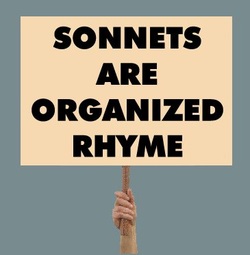 Class-generated guidelines for the Sonnet Challenge
Your sonnet should contain:
1. 14 lines
2. Attempted iambic pentameter (or at least around 10 syllables per line)
3. Shakespearean or Petrarchan rhyme scheme--slant rhyme counts!
4. A 1-2 paragraph response to discuss process and intentions.
Ms. Draper-generated additional notes:
1. Please feel free to post sonnets and/or responses in the comments!
2. In order to receive credit for the assignment, you must take the assignment seriously.
3. Of course, if you are subsequently inspired to write a series of silly, inane sonnets, go for it.
 The reading blogs have been great fun, but I'd like to do something a little different for Friday's double period. Check out the directions below and let me know if you have questions...
Directions
1. Each student will be assigned a question for further analysis.
2. Each student will prepare his/her thoughts on the question, including annotations, direct quotes and overall commentary. I will collect these responses for a homework grade.
3. At the beginning of class on Friday, students will meet with their other group members to discuss their findings. Then each group will lead discussion on their assigned question.
Question One (assigned to Puni, Kristie and Devin)
Describe Jane's experiences in Chapter 28. Is Mother Nature kind to Jane? What about people? What do you make of the sentimental description of the Rivers?
Question Two (assigned to Megan and Laura)
Using Chapter 29 as your basis, compare St. John to Rochester. How does Jane feel toward him, and why?
Question Three (assigned to David and Nate)
Equality was a major concern for Jane in her relationship with Rochester. Examine Jane's relationships with the Rivers, the servant Hannah and Jane's students. Is Jane as concerned about equality in these relationships? Why or why not?
Question Four (assigned to Jenny, Destiny, and Casey)
Some critics have suggested that the "Rivers" portion of the book could be left out entirely. Is the River story important to Jane's development? Why or why not? Give careful reasons for your view.
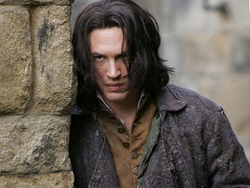 Rochester is a tormented character, full of contradictions, particularly when it comes to his treatment of Jane. Modern readers aren't always sure what to make of him--perhaps for good reason. Critics have long touted Rochester as an example of the Byronic Hero, a seething, dark, yet powerfully attractive male character. This archetype was developed in the writings of Lord Byron during the Romantic period (roughly 1770-1840), and continues to manifest in pop culture today (Edward Cullen, anyone?).
In order to gain more literary and historical context, please read the following articles online:
1. Overview of the Byronic Hero
http://teachers.sduhsd.k12.ca.us/sfarris/Files/AP%20Lit%20Files/Microsoft%20Word%20-%20Characteristics%20of%20the%20Byronic%20Hero.pdf
2. Overview of Romanticism
http://academic.brooklyn.cuny.edu/english/melani/cs6/rom.html
Considering both articles, as well as your assigned reading in Jane Eyre, please write a post that answers the following questions. To what extent can Rochester be considered a Byronic Hero? Which of these qualities are attractive to Jane? Which of these qualities push her away and/or contribute to her flight in Chapter 27? Please integrate direct quotes into your analysis. Please also reply to at least one of your classmates.
Length: 2-3 paragraphs for original post. 1-2 paragraphs for reply to classmate.
Due: Monday night (Jan 16), by midnight at the latest.
|







 RSS Feed
RSS Feed